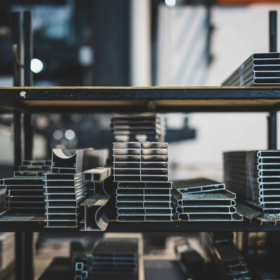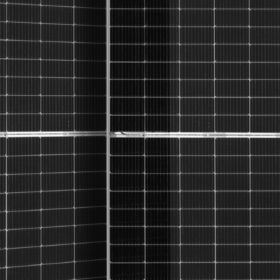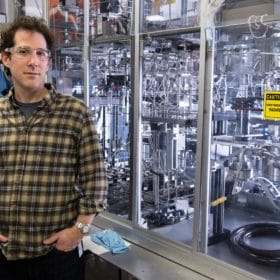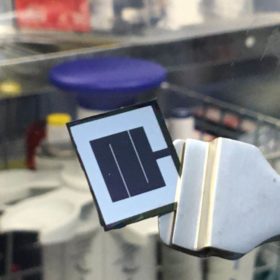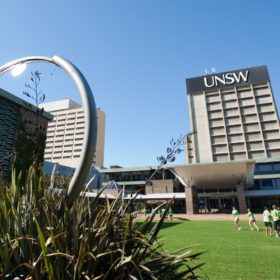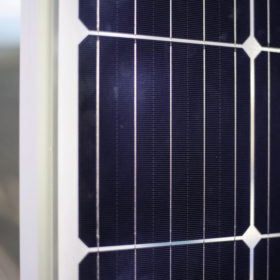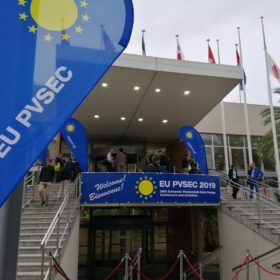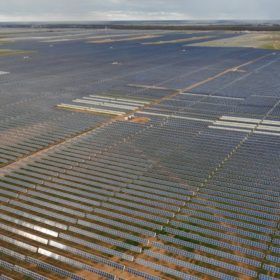Huge aluminum demand expected in solar industry, concerns arise on emissions
Researchers from the University of New South Wales (UNSW) predict that growth to 60TW of photovoltaics needed to rapidly reduce emissions to ‘net zero’ and limit global warming to <2 °C could require up to 486 Mt of aluminium by 2050. A key concern for this large aluminium demand is its large global warming potential.
JinkoSolar sets new record for n-type solar cell efficiency
Manufacturing giant JinkoSolar has set another world record for n-type solar cell efficiencies with its TOPCon technology, this time pushing to 25.4%. The new world record was confirmed by JET laboratories in Japan, and surpasses JinkoSolar’s previous record of 25.25% set back in May.
New approach to III-V tandems sets 32.9% efficiency record
A collaboration between the U.S. National Renewable Energy Laboratory and Australia’s University of New South Wales has yielded a new efficiency record of 32.9% for a tandem cell device utilizing III-V materials. Key to the achievement was a new technique enabling the researchers to take advantage of “quantum wells” in the material that serve to trap charges and enable tuning of the cell bandgap to absorb more of the light spectrum.
Hidden costs for scaling perovskite cells
Scientists in Australia conducted a detailed cost analysis for perovskite-on-silicon tandem PV cells, based on several possible iterations of the technology. The research identifies areas where unexpectedly high costs might prove a bump in the road toward commercialization and suggests ways these might be reduced.
Cost analysis shows off-grid-solar powered electrolysis potential of Australia and Chile
Scientists at the University of New South Wales have developed a model to determine the levelized cost of hydrogen (LCOH) by also considering historical weather data at specific locations. According to them, powering electrolyzers with off-grid solar offers the advantage of avoiding the expense of a grid connection and exposure to the risk of delays in both the physical connection and the approval process.
Heating up the heterojunction-LID discussion
Scientists led by the University of New South Wales have looked into the long-term degradation of silicon-heterojunction. Their findings suggest that illumination at high temperatures could actually improve cell efficiency, but also risks activating multiple light-induced degradation mechanisms if not carefully controlled.
The psychology of climate-change denial – we’re all on the spectrum
With fire-extinguishing rain on the east coast, coronavirus flagged an urgent threat and PM Scott Morrison drumming up support for technology and free-market forces to beat climate change, it all made for a weekend to shake the resolve of some Australians to act on their carbon emissions. Understanding the psychology of how we perceive risk and commit to action can help us focus and keep fighting the fight.
Preventing LID in a 23.83% efficient Longi PERC cell
Australian researchers have unveiled hydrogenation technology to reduce light and elevated temperature-induced degradation in Czochralski silicon PERC solar cells. The developers say the process can minimize degradation without sacrificing performance in cells and modules.
Five takeaways from EU PVSEC 2019
This week, pv magazine headed to Marseille for the 36th edition of the EU PVSEC conference and exhibition. During the week-long show, leading universities and research institutes presented their latest results to the industry and public. As the conference heads into its final afternoon, we’ve put together five key takeaways from this year’s event.
255 MW Sunraysia Solar Farm nears completion
UNSW Sydney has announced the looming completion of the Sunraysia Solar Farm in Australia. The university is now on track to run on 100% renewable energy from 2020, as the massive 255 MW project will be operational by the end of this year, with 25% of its generation to be purchased by UNSW.
